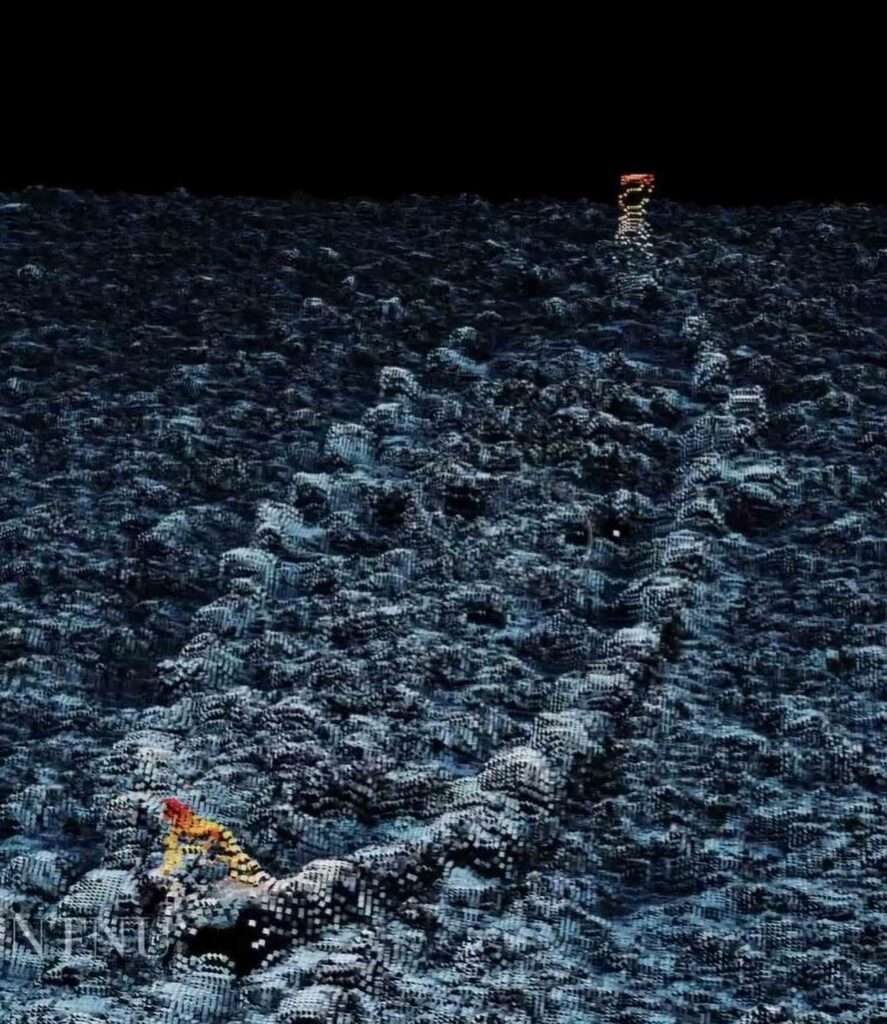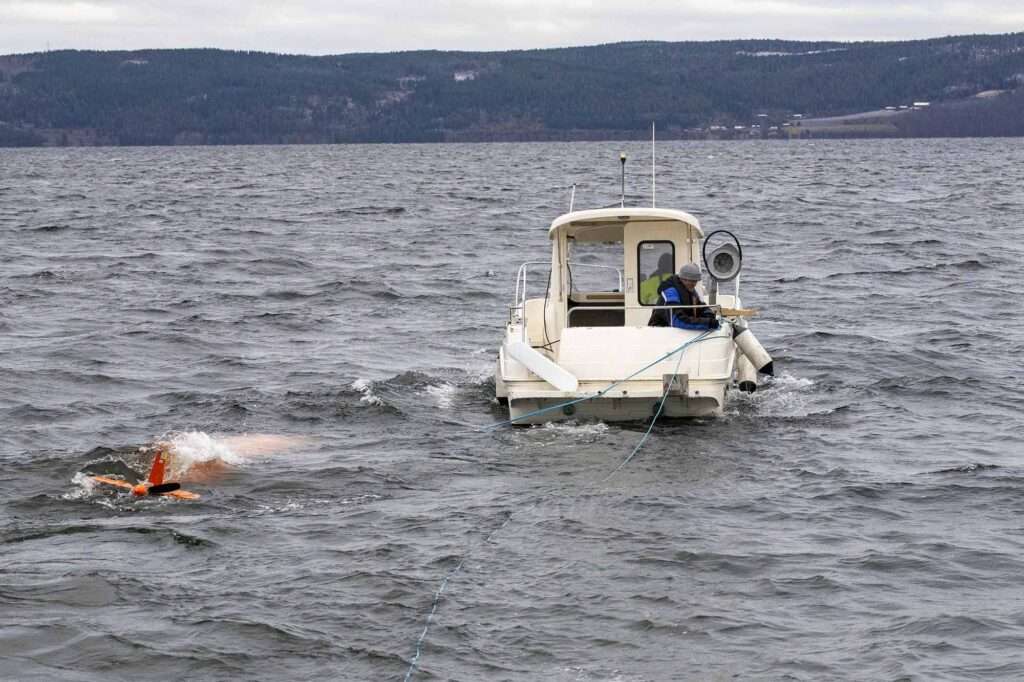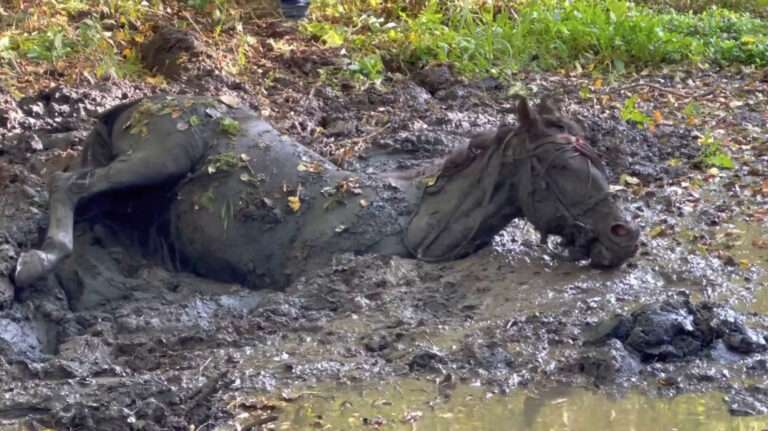A shipwreck thought to date back hundreds of years to medieval times has been found perfectly preserved at the bottom of a lake.
An unmanned sub equipped with cameras discovered the perfectly shaped 33-foot (10-metre) hull in the mud 1,300 feet (400 metres) below the surface of Mjosa lake in Norway.

Images from the sub show the outline of the boat clearly without any apparent damage to the structure.
The discovery was made when the Norwegian Defence Research Establishment (Forsvarets Forskningsinstitutt; FFI) launched the Hugin, an autonomous underwater vehicle (AUV).
Newsflash obtained a statement from the Norwegian Defence Research Establishment saying the AUV detected the wreck using sonar.
The sub also found an undetonated World War II bomb.
The statement also said: “The Hugin revealed a large, undetonated bomb that sits like an arrow in the mud, more than 400 metres below the Mjosa’s surface.”

The research Institute added: “At the same depth lies a 10-metre-long wooden boat.
“The wreck may have been here since the Middle Ages, but has not been dismantled.
“These are just two of the discoveries that have been made with the help of the FFI’s Hugin.
“The autonomous submarine has now been on its first voyage in Norway’s largest lake.”
The experts said that the area searched lies along Mjosa’s west side.
They said the lake is a known dumping ground for World War II (WWII) ordnance, with FFI researcher Petter Lagstad adding: “What we are sure of is that a lot of dumping has also taken place outside the areas that were intended for the purpose.”

The FFI said: “A large number of heavy bombs have been found, the weight of each of them is over a tonne.
“How did they get here? In the future, a lot of data will be processed. Hugin can in principle identify a soda can from several hundred metres away.
“There are many details here that can be traced for the first time. Multiple assignments FFI’s mission from the [Norwegian] Ministry of Defence is concentrated on mapping explosives and ammunition waste, and assessing what environmental hazards they may pose.
“The institute has extensive experience with investigations of similar material along the Norwegian coast.”
Lake Mjosa is the largest lake in Norway and one of the deepest in Europe.

To find out more about the author, editor or agency that supplied this story – please click below.
Story By: Joseph Golder, Sub-Editor: Marija Stojkoska, Agency: Newsflash
The Ananova page is created by and dedicated to professional, independent freelance journalists. It is a place for us to showcase our work. When our news is sold to our media partners, we will include the link here.




